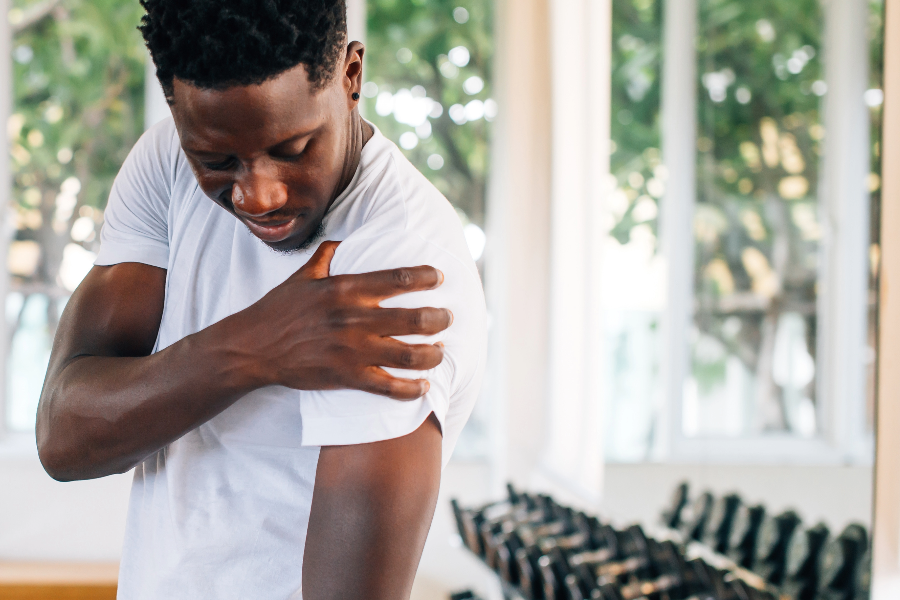Nearly two million Americans visit their doctors every year seeking care for rotator cuff injuries that cause shoulder pain and reduce mobility in their arms and shoulders. “Rotator cuff injuries are quite common,” says Brian Cash, MD. Dr. Cash is an orthopedic surgeon with Roper St. Francis Physician Partners Orthopaedics. He specializes in sports injuries affecting the knee, hip and shoulder. We talked to Dr. Cash to get his insights on rotator cuff injuries and their care options. Here’s what he shared.
Anatomy of your shoulder
Your shoulder is a complex joint made up of three bones:
- Humerus (upper arm)
- Scapula (shoulder blade)
- Clavicle (collarbone)
Your rotator cuff is a group of tendons and muscles that provides stability and keeps your shoulder bones in the correct places. “The rotator cuff forms a sleeve or cuff around the shoulder. It provides biomechanical stability to the shoulder that allows it to have the range of motion and movements that it does,” says Dr. Cash. “As humans we rely on our arms more than any other mammals out there,” adds Dr. Cash. “Your shoulder joint is quite complex. You have a range of motion in every plane, making your shoulder joint a little more prone to injury. It requires complex biomechanics to give it stability, motion and strength.”
Understanding rotator cuff injuries
“Rotator cuff injuries are either chronic, which means they develop over a long time or acute, which occurs suddenly,” says Dr. Cash. “An acute rotator cuff injury happens when one or more of your shoulder muscles are torn from the bone they’re attached to. Maybe you fall and catch yourself with your arm, overstretching your arm in the process. Or maybe a football player going for a tackle dislocates their shoulder and tears their rotator cuff. It’s usually a pretty good injury that leads to acute tears. However, even just a simple fall can tear the rotator cuff acutely,” explains Dr. Cash. “Chronic rotator cuff tears are more common. We put a lot of demand on our shoulders – probably more than our bodies were built to handle. And over time, the rotator cuff can get frayed,” says Dr. Cash. “It’s like if you were to rub a rope through a pulley a million times. Eventually, it would fray and tear. That’s sort of what happens to the rotator cuff. It starts to get frayed. And that can create inflammation and pain. And then as the deterioration progresses, it can erode through the whole tendon and create a tear.” Rotator cuff injuries may not cause symptoms at first. Others can lead to immediate pain and limited mobility.
Common symptoms include:
- Difficulty reaching behind your back
- Difficulty sleeping on the affected side
- Pain when reaching overhead
- Significant shoulder or arm pain, especially at night
- Weakness when lifting or rotating your arm
Although anyone can develop a rotator cuff injury, your risk increases if you are:
- Over age 40
- An athlete in a sport with repeated shoulder movements such as swimming, tennis or baseball
- Have a job that requires extensive overhead reaching or heavy lifting
Diagnosis and treatment
Care for rotator cuff injuries is personalized according to the specifics of each situation, according to Dr. Cash. Diagnosis may include:
- MRI scan
- Physical exam
- Shoulder strength test
- Ultrasound
- X-rays
Treatment options vary depending on the severity of your injury and your health goals. Care options include:
- Rest
- Putting a cold pack or ice on the affected area
- Prescription pain relievers and injections
- Over the counter pain and anti-inflammatory medications
- Physical therapy and exercise
- Surgery
“No patient is exactly the same and no tear is exactly the same. And we have to take all this data and evidence into account to help make a very specific plan for each patient. We look at what you want to do in your free time, how severe your pain and dysfunction are and what you want to achieve,” says Dr. Cash. “It’s all about your goals and what you need to get back to – for a living or your personal, recreational and free-time activities. We have to consider all your needs to achieve the best possible outcome.”
If shoulder pain or a sports-related injury is affecting your daily activities, we have the region’s largest group of shoulder specialists. Our team of board-certified and fellowship-trained physicians are available, often with same-day or next-day appointments. Schedule an appointment today.

